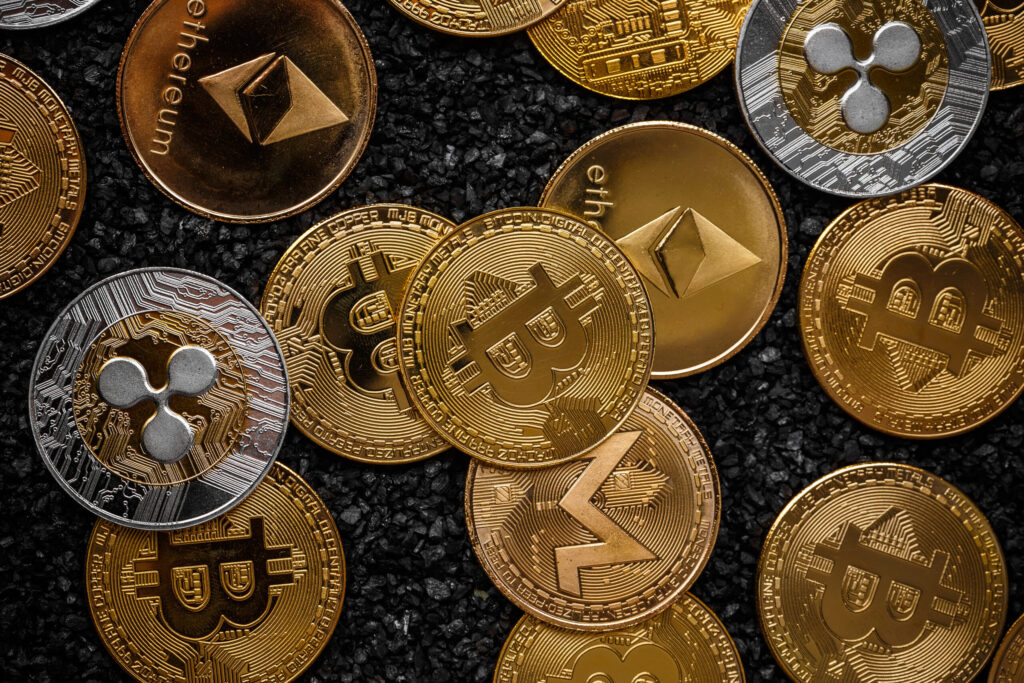Cryptocurrency markets are known for their volatility, but when prices surge across the board, both seasoned investors and curious observers ask the same question: why is crypto going up? The answer involves a combination of market psychology, economic indicators, institutional activity, and technological innovation. Understanding the underlying drivers of crypto bull runs helps investors make informed decisions and recognize potential turning points in the market.
This article will explore the key factors influencing cryptocurrency price increases, including macroeconomic trends, regulatory shifts, supply-demand dynamics, and investor sentiment. Whether you’re holding Bitcoin, exploring Ethereum, or investing in altcoins, it’s essential to understand what fuels these dramatic price movements.

The Role of Market Sentiment
Crypto prices are often influenced by collective investor sentiment. When confidence in the market increases, demand rises, pushing prices higher. Positive sentiment can be triggered by various factors, including favorable news coverage, social media buzz, and broader economic optimism.
Unlike traditional financial markets, cryptocurrency is still considered a relatively young and speculative asset class. This makes it especially vulnerable to emotional trading and hype cycles. Platforms like Twitter, Reddit, and YouTube play a significant role in shaping public opinion and influencing buying behavior.
When public sentiment turns bullish, fear of missing out (FOMO) can kick in, prompting more investors to jump in and further driving up prices. This cycle can create rapid and sometimes unsustainable price growth.

Institutional Adoption and Investment
One of the biggest drivers of upward momentum in the crypto market is institutional adoption. When large financial firms, hedge funds, and publicly traded companies begin investing in cryptocurrencies, it signals confidence in the asset class.
For example, Bitcoin saw a surge in price when companies like Tesla, MicroStrategy, and Square added it to their balance sheets. Additionally, asset managers like BlackRock and Fidelity have launched or expressed interest in crypto investment products, including Bitcoin ETFs.
Institutional involvement does two things:
- It brings in massive capital inflows.
- It legitimizes crypto as a mainstream financial asset.
At ELVT Financial, we educate clients on the importance of understanding institutional trends and how they can signal entry or exit points for individual investors.

Macroeconomic Influences
Macroeconomic conditions have a profound impact on crypto prices. Several broader financial factors often align with bullish momentum in the crypto market.
Inflation and Currency Devaluation
When inflation is high, investors often look for stores of value outside of traditional fiat currencies. Cryptocurrencies like Bitcoin are seen as digital gold due to their limited supply and decentralized nature.
Countries experiencing currency instability often see increased crypto adoption as citizens seek to protect their wealth. This behavior adds demand and can contribute to price increases.
Interest Rates and Federal Reserve Policy
When interest rates are low, borrowing is cheaper and investors are more likely to pursue higher-risk assets like crypto for better returns. Conversely, rising interest rates tend to slow crypto markets as safer yields become more attractive.
Announcements from the Federal Reserve and other central banks can trigger major market movements, including surges in Bitcoin and Ethereum.

Regulatory Developments
Although regulation is often seen as a threat to crypto, clarity in regulation can actually drive prices up. When governments issue favorable guidelines or recognize cryptocurrency as a legitimate asset, it can attract new investors.
Recent approvals of Bitcoin ETFs by U.S. regulators or discussions about creating digital versions of fiat currencies (CBDCs) have added credibility to the crypto sector. Even countries like El Salvador adopting Bitcoin as legal tender can send a bullish message to global markets.
Conversely, crackdowns or bans in major markets like China can temporarily depress prices. But over time, regulatory clarity helps reduce uncertainty and attract long-term capital.
Supply and Demand Mechanics
Many cryptocurrencies have built-in scarcity through supply caps or controlled issuance. For instance, Bitcoin has a maximum supply of 21 million coins. When demand surges and supply remains fixed, prices naturally increase.
Key events that affect supply include:
- Halvings (Bitcoin): Every four years, the reward for mining Bitcoin is cut in half, reducing the rate of new supply.
- Burn Mechanisms: Some coins like Ethereum have introduced token burning, where a portion of transaction fees is destroyed, reducing total supply.
On the demand side, increased utility, improved network functionality, and rising adoption all contribute to higher interest from investors, developers, and consumers alike.

Technological Upgrades and Network Development
Crypto projects that introduce technological innovations or upgrades often see surges in value. For example, Ethereum’s upgrade to Ethereum 2.0 aimed to improve scalability, security, and energy efficiency, generating renewed investor interest.
Other catalysts include:
- Layer 2 scaling solutions
- Smart contract enhancements
- Interoperability between blockchains
- New decentralized applications (dApps) gaining traction
When the underlying technology improves, or a platform attracts more users and developers, the associated tokens often see price appreciation.

Speculation and Leverage
A major force behind crypto price spikes is speculative trading. High levels of leverage offered by crypto exchanges allow traders to make large bets on price movements. This amplifies both gains and losses, creating extreme volatility.
Liquidation of short positions can also trigger short squeezes, leading to sudden upward price movement. These market mechanics can cause rapid price appreciation that may not always be supported by fundamentals.
Global News and Events
Crypto markets respond instantly to global news. Announcements like partnerships, integrations with financial institutions, or positive media coverage can send prices soaring.
Additionally, fear or uncertainty in traditional markets often leads investors to seek alternative assets. For example, during global banking instability or stock market crashes, crypto may rally as a perceived hedge.
News cycles, celebrity endorsements, and even memes can all influence price trends in this digitally-native and sentiment-driven space.
Retail Investor Behavior
Retail investors also play a major role in pushing prices upward. Accessibility through apps like Coinbase, Robinhood, and Binance has opened the crypto market to millions of everyday traders.
As more people invest, especially in waves of enthusiasm fueled by social media or public figures, demand rises. Platforms like TikTok and Twitter are increasingly influential in crypto adoption and sentiment shifts.
Educational content from firms like ELVT Financial aims to help retail investors navigate crypto investment strategies responsibly, understanding both the upside and the volatility involved.
Historical Cycles and Halving Events
Bitcoin and other cryptocurrencies often follow historical market cycles. These cycles typically include accumulation, uptrend, euphoria, correction, and consolidation phases.
Bitcoin halvings historically precede bull runs:
- 2012 halving → major 2013 bull market
- 2016 halving → 2017 surge
- 2020 halving → 2021 all-time highs
Investors familiar with these patterns may anticipate price increases and invest accordingly, contributing to the upward trend.

Conclusion
So, why is crypto going up? The answer is multifaceted: bullish sentiment, institutional interest, economic conditions, technological advancements, and limited supply all play a role. Whether you’re a long-term holder or active trader, understanding the dynamics behind crypto price movements is essential for making sound financial decisions.
At ELVT Financial, we help clients into broader portfolios and long-term strategies. If you’re navigating the digital asset landscape and want guidance on risk, diversification, or tax implications, our team is here to support you every step of the way.



